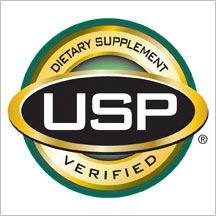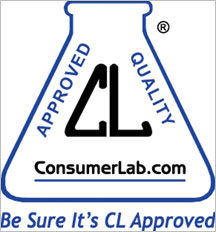Use of supplements in pediatrics: What are your patients taking?
Supplements are described as a heterogenous group of products that are intended to supplement the diet. Supplements are not described as medicinal drugs or foods, although they are commonly used by consumers for a therapeutic effect (ie, to act as a drug).

Supplements include vitamins, minerals, amino acids, probiotics, herbal products and botanicals, among other products. Recent estimates suggested that there at least 90,000 different supplement products available in the United States and 4,000 supplement manufacturers. An estimated 150 million people use supplements in the U.S., and 23 million reported that they use supplements in place of therapeutic drug products. More than $30 billion is spent annually on supplement products in the U.S., so supplement use is big business.
Data from the National Health and Nutrition Examination Survey, or NHANES, from 2007 to 2010 (n = 8,245) showed that supplements are used by 31% of children. The vast majority of the products that children used were multivitamin or multivitamin-mineral products. Only 15.5% of these products were used with the specific advice of a physician or prescriber. NHANES data from 1999 to 2012 additionally demonstrated that 52% of adults reported using at least one supplement product.
Regulation and product claims
Important aspects of supplement products that consumers and health care professionals should be aware of are the significant differences in manufacturing and product labeling claims compared with prescription and over-the-counter drug products. A medicinal product with a “health” claim, such as a drug, or a product with a “nutrient” claim, such as an infant nutritional formula product, requires efficacy and safety labeling approval by the FDA before marketing and commercial availability. Supplement products employ a structure/function claim, implying that the product is used to “maintain” or “preserve” health. This claim does not require pre-marketing efficacy and safety labeling approval by the FDA. The label of a supplement product with a structure/function claim must include the phrase, “This statement has not been evaluated by the Food and Drug Administration. This product is not intended to diagnose, treat, cure or prevent disease.” This statement is often made in smaller print and placed inconspicuously on the product label. Several studies have demonstrated that consumers tend to ignore this wording because of its location on the product label and, consequently, its true meaning and implications are unknown to the consumer. A 2002 Harris Poll found that 50% of respondents believed that supplement products are labeled and approved by the FDA for efficacy and safety.
The Dietary Supplement Health and Education Act
Supplement products are required to meet regulations established by the Dietary Supplement Health and Education Act (DSHEA) of 1994. DSHEA allowed the FDA to regulate supplements under the auspices of the Center for Food Safety and Applied Nutrition. Under DSHEA, supplements are excluded from the strict potency and purity standards established for drug products; instead, they are regulated by standards applied to food products. As a result, clinical trial data are not needed to demonstrate product efficacy and safety. Essentially, this has created what has been described as an “honor system” in which the manufacturer is responsible for the supplement product’s safety and efficacy. As one might imagine, this can be problematic. Over 25% of supplement manufacturers do not register with the FDA, which additionally increases enforcement difficulties. The DSHEA established Good Manufacturing Practices (GMPs) for supplement products; however, they are not as strict as GMPs established for drug products, and the FDA is unable to inspect the vast majority of the estimated 4,000 supplement manufacturers. Identification and removal of potentially contaminated or unsafe products from the market is more difficult to enforce because the burden to demonstrate that a supplement product is unsafe has been placed upon the FDA. Public health experts have recently made calls to reform DSHEA and improve regulatory enforcement of supplement product safety by the FDA.
Supplement contamination
Studies have shown the contamination of supplement products with potentially toxic substances and the inaccuracy of product labels. Most recently, Tucker and colleagues demonstrated that over a 10-year period, 776 adulterated supplements were identified by the FDA, and 146 supplement manufacturers were implicated. The adulterated products were mostly marketed for sexual enhancement, weight loss or muscle building. Of the adulterated sexual enhancement products, 47% contained sildenafil (the active ingredient in Viagra [Pfizer]), and over 89% of muscle-building products contained synthetic corticosteroids or corticosteroid-like ingredients. These data also showed that many products continued to contain adulterated ingredients despite one or more warnings from the FDA.


Source: U.S. Pharmacopeia/ConsumerLab.com
In a study analyzing 31 melatonin supplement products purchased from grocery stores in Ontario, Canada, researchers found that the melatonin content of the products ranged from –83% to +478% of the labeled content, with lot-to-lot variability of up to 465% (the specific manufacturers were not identified in the study). Even more troubling, more than 25% of these products additionally contained serotonin. In an investigation by the New York state attorney general’s office analyzed herbal supplement products purchased at four major retailers (GNC, Target, Walmart and Walgreens). The results of the analysis, which were broadcast on national news networks in 2015, determined that only 21% of the 78 products contained DNA from the plants stated on the product labels. Adulterants in these products included rice, beans, pine, citrus, asparagus, primrose, wheat, houseplants and wild carrots. In some products, these unlisted adulterants were the only plant material found.
A 2010 congressional investigation of 40 supplement products similarly found that most of the analyzed herbal supplement products contained adulterants, including trace amounts of lead, mercury, cadmium and arsenic. Pesticides were also found in nearly one-half of the tested products.
What can health care professionals and consumers do?
Unless specifically questioned, many caregivers may not consider supplements to be “drugs” when asked, “What medicines does your child take?” Because published data indicate that most supplements are used without the specific advice or recommendation of a prescriber, health care providers may consider counseling their patients about the necessity and potential dangers of supplement product use. Although vitamin and mineral supplement products may be therapeutically important when specific deficiencies are diagnosed, many families use these products without diagnoses. Data supporting the benefits of supplements (eg, maintenance of health in otherwise healthy individuals, prevention of cancer or cardiovascular events in adults) are weak.
Although supplement product purity and content are not highly regulated, some products are analyzed to higher than recommended standards by private organizations, such as the United States Pharmacopeia (USP) or ConsumerLab.com (Figures 1 and 2). Consumers and health care professionals can be further assured that products assessed by these organizations will contain the product that is mentioned on the label, without adulterants. If a patient does not respond to a supplement product, or if unusual adverse effects occur, use of a product that has been additionally analyzed and labeled with these program seals should be considered.
- References:
- Bailey RL, et al. Pediatr Res. 2013;doi:10.1038/pr.2013.160.
- Cohen PA. JAMA Netw Open. 2018;doi:10.1001/jamanetworkopen.2018.3329.
- Dwyer JT, et al. Nutrients. 2018;doi:10.3390/nu10010041.
- Erland LAE, Saxena PK. J Clin Sleep Med. 2017;doi:10.5664/jcsm.6462.
- Starr RR. Am J Public Health. 2015;doi:10.2105/AJPH.2014.302348.
- Tucker J, et al. JAMA Netw Open. 2018;doi:10.1001/jamanetworkopen.2018.3337.
- For more information:
- Edward A. Bell, PharmD, BCPS, is a professor of pharmacy practice at Drake University College of Pharmacy and Health Sciences and Blank Children’s Hospital and Clinics, Des Moines, Iowa. He also is a member of the Infectious Diseases in Children Editorial Board. Bell can be reached at ed.bell@drake.edu.
Disclosure: Bell reports no relevant financial disclosures.
